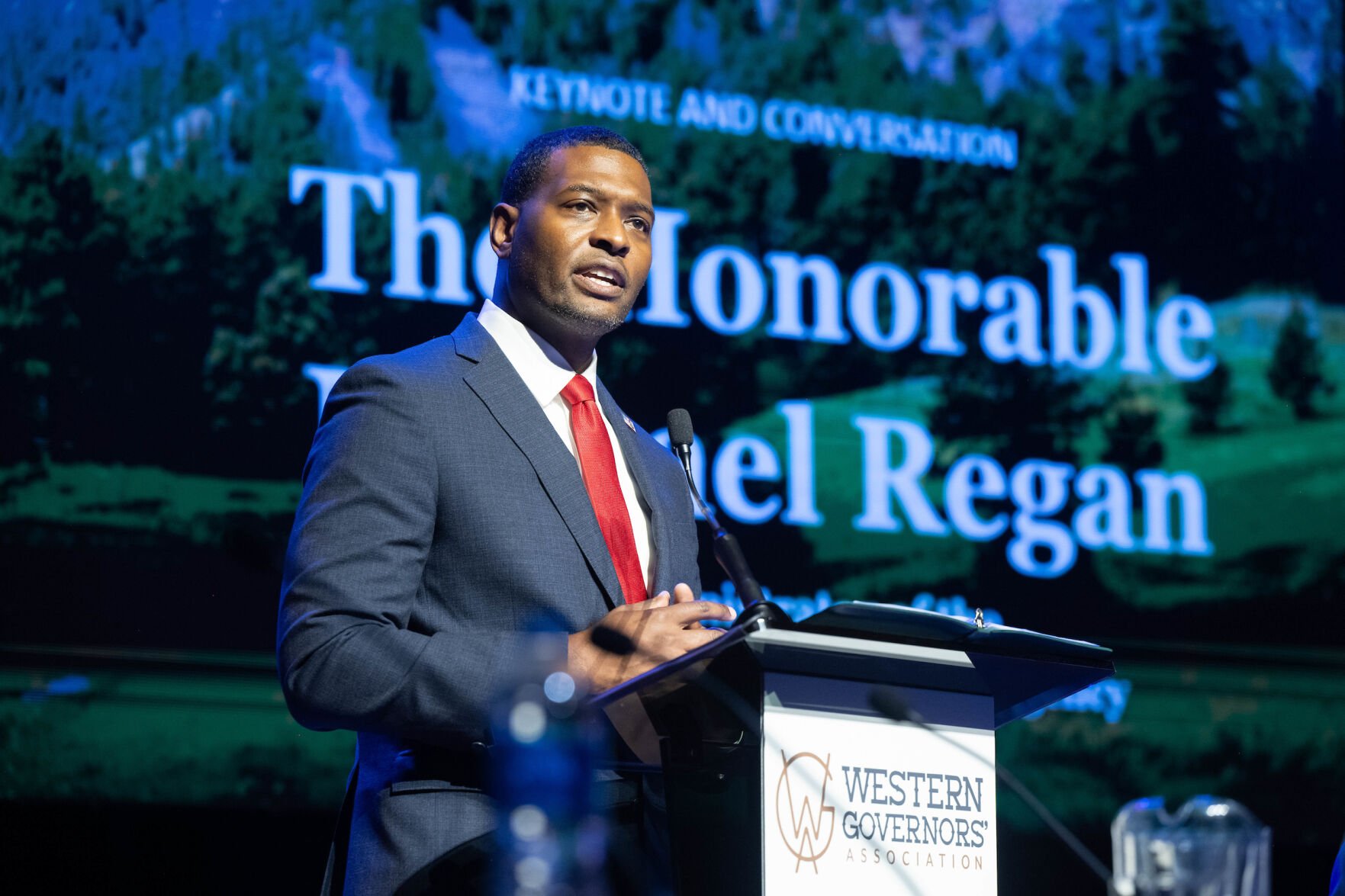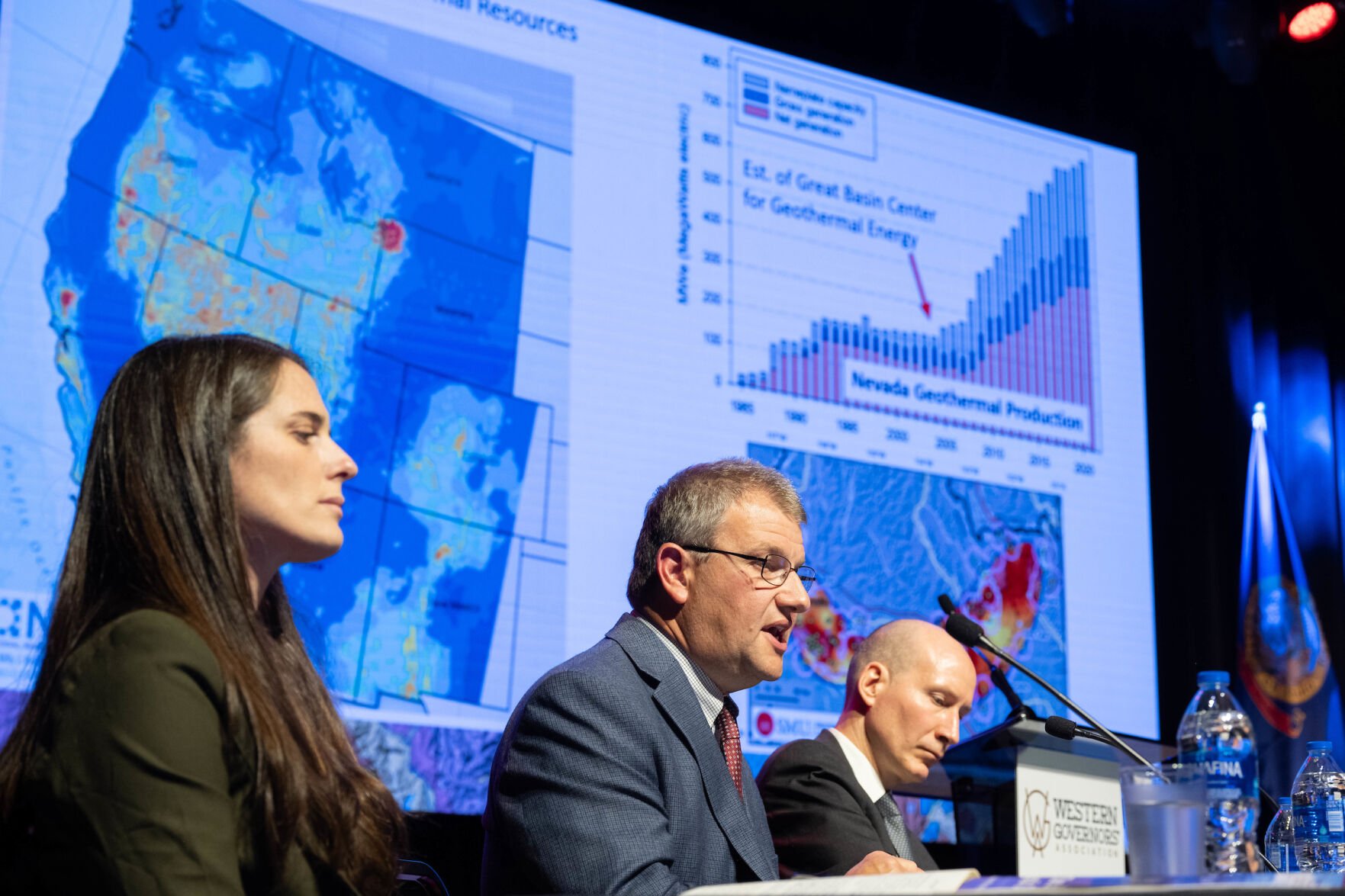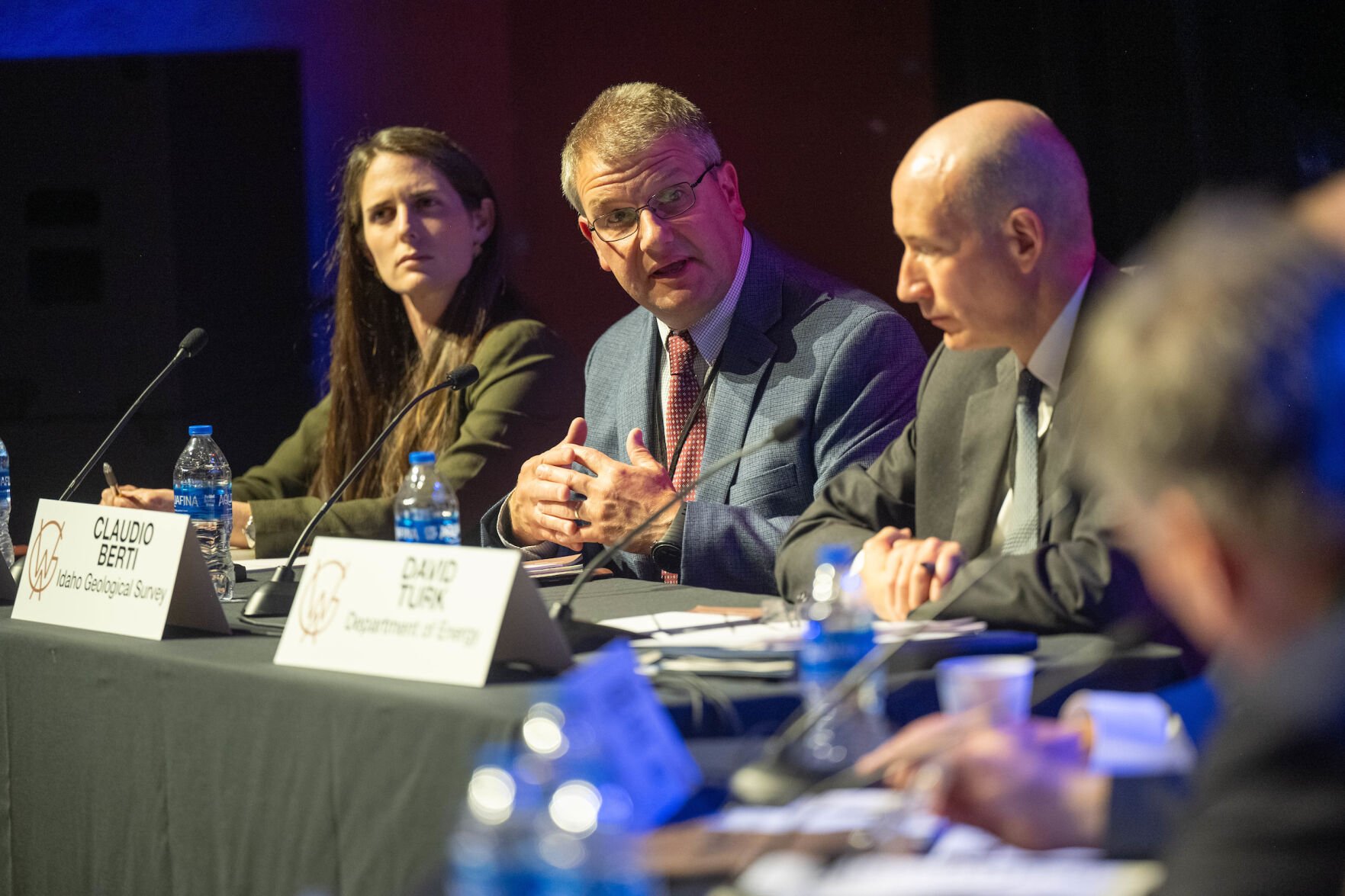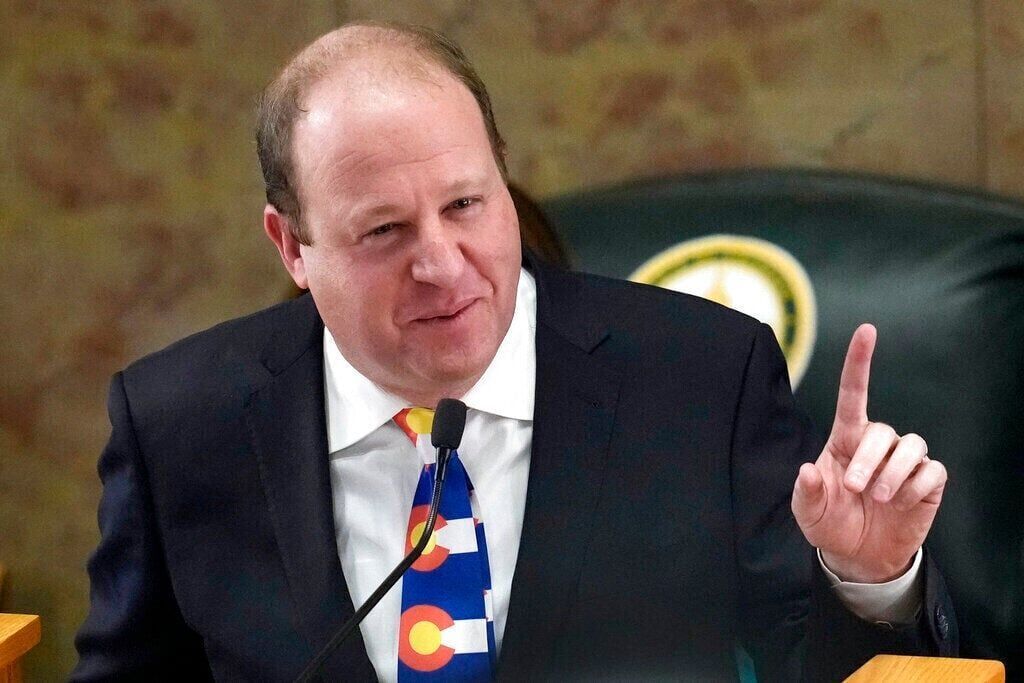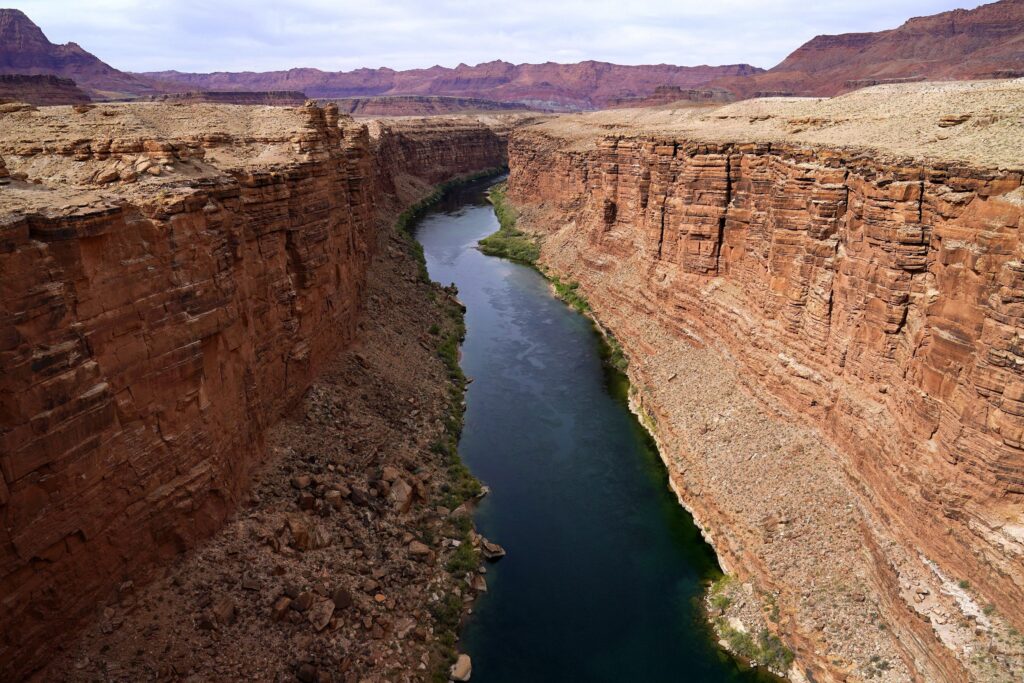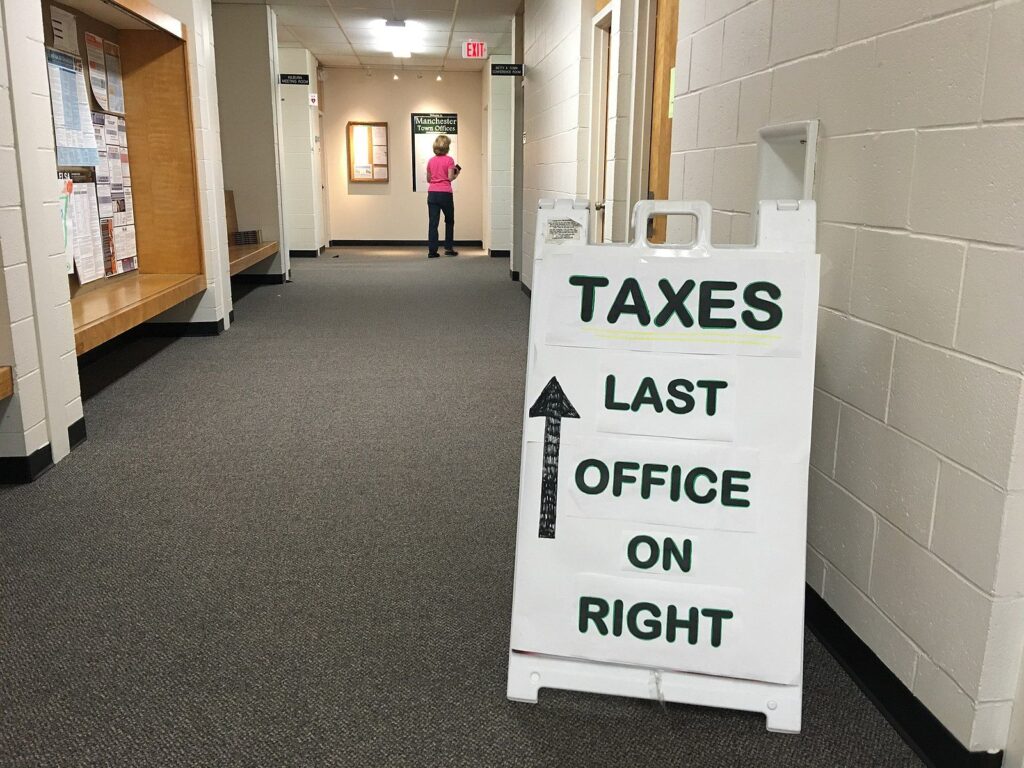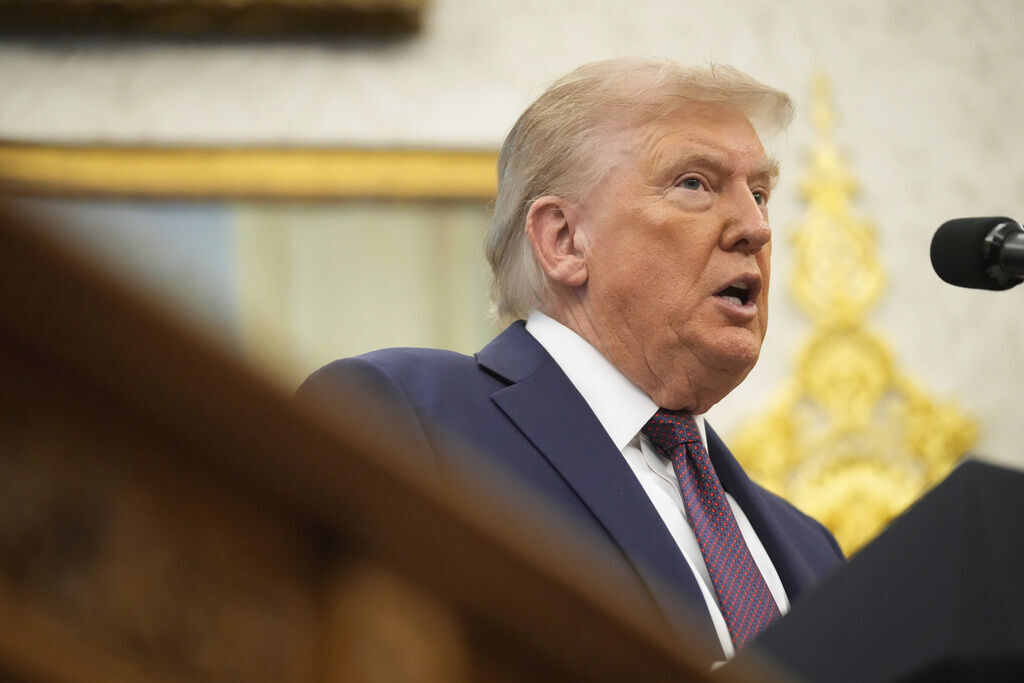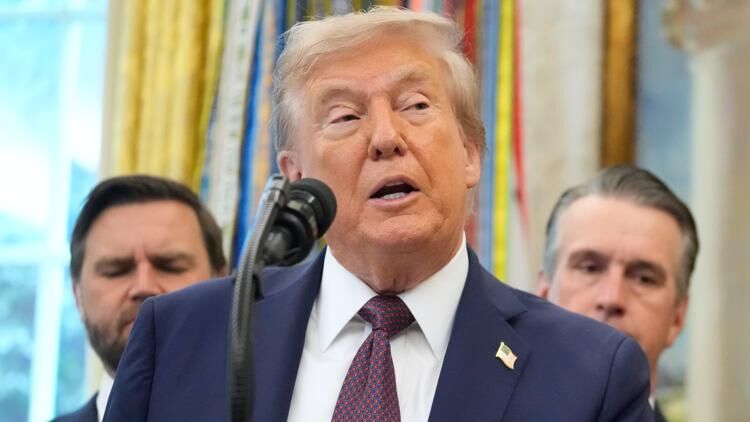Geothermal power showcased at Western Governors Association meet in Boulder

The “Heat Beneath Our Feet” is a potential source of carbon-free energy according to Gov. Jared Polis. Polis, the 2023 Chair of the Western Governors’ Association. He chose geothermal energy as the focus of his year-long tenure at the organization.
The WGA annual meeting, held this week in Boulder, showcased a round-table discussion between six western governors and geothermal energy expert Claudio Berti, director and state geologist for the Idaho Geological Survey; David Turk, deputy secretary of the U.S. Department of Energy; and Sarah Jewett, vice president of strategy for Fervo Energy.
“Geothermal is a huge under-tapped resource,” said Polis. “It’s abundant, it’s American made, it’s secure, it’s domestic, it’s getting to be lower and lower cost. It’s reliable, it’s base load.”
The idea is to drill deep wells, sometimes more than 10,000 feet deep, in order to reach hot zones where water can be injected and then returned to the surface as steam that can be used for heating and to generate electric power. Not all wells have to be that deep.
The West, said Berti, is rich in reachable geothermal resources – as evidenced by the many surface thermal features in places like Yellowstone National Park. Colorado, Polis said, has many geothermal features that show the state’s suitability for exploration.
Polis pointed out Boise, Idaho’s century-old downtown geothermal heating and cooling system, one of the largest in the country. The city’s geothermal heating utility delivers 177° geothermally heated water through a network of pipes that warms more than 6 million square feet of building space, warms swimming pools and melts snow on city sidewalks, according to the city’s website.
David Turk, Deputy Secretary at the U.S. Department of Energy said that the first geothermal power plant in history opened in 1906, the same year that the historic Boulder Theater, where the event was held, opened. He said that today, the U.S. currently produces 3.7 gigawatts of geothermal electricity, but has the potential to provide 5,000 gigawatts, or five terawatts of electricity.
“Our goal is to reduce the cost of enhanced geothermal by 90% by 2035,” said Turk. “So, a very ambitious goal, but one we think is achievable given leadership certainly up here and in the audience that would get us down to $45 per megawatt hour by 2035.”
But Turk also pointed out a problem that plagues not just geothermal energy, but all dispersed renewable energy generators, including wind and solar: The lack of transmission line capacity.
“The fourth piece of the strategy of the equation is on transmission,” said Turk. “If we build out these enhanced geothermal resources and create electricity, but where they’re not near load centers, they’re not near cities and other places that use electricity, that does us no good.
“We need to build out transmission like we’ve never built out in our country right now. We build out about 1% of our transmission in this country. That is woefully inadequate, and you need to do at least 2% if not 3% per year.”
According to energy distribution expert Jesse Jenkins, an assistant professor and energy systems engineer at Princeton, the task of building enough transmission infrastructure is a formidable one, and the costs are high.
“Reaching the goal of net-zero greenhouse gas emissions by 2050 will require substantial investment in the U.S. transmission grid, to accommodate growing electricity demand from EVs, heat pumps, and hydrogen producers, and tap into the nation’s abundant renewable resource potential,” Jenkins said in an email to The Denver Gazette. “One scenario included in the Princeton Net-Zero America study identified a need for about 60% more transmission capacity by 2030 and tripling current capacity by 2050.”
The Princeton Net Zero America report shows building out all that infrastructure could cost $1.1 trillion.
In Colorado, Xcel Energy just kicked off its 550-mile, 345 kilovolt, 5,000 MW Power Pathway Project in eastern Colorado at a cost of $1.7 billion that, according to Excel Energy Colorado’s President Robert Kenney already has nearly 1,100 bids for renewable energy projects that want to connect.
Michelle Aramayo, spokesperson for Xcel Energy Colorado, told the Denver Gazette in an email that, not including land or substation costs, the Power Pathway Project comes in at “up to $2.44M per mile.”
“I think we all agree and know that we’re going to need more transmission, especially interstate transmission as the mix of power in the grid changes,” said Polis at a Monday afternoon press conference. “We are also focused on reducing some of those cost drivers of transmission infrastructure, namely finding ways to shorten the approval process federally for facilitating permitting around transmission infrastructure to further reduce costs.”
“The Western Governors’ Association represents the Governors of the 22 westernmost states and territories as an instrument for bipartisan policy development, information exchange, and collective action on issues of critical importance to the western United States,” said Jack Spina, Communications Director for the association.
The governors in attendance were:
- Jared Polis, Colo.
- Michelle Lujan Grisham, N.M.
- Mark Gordon, Wyo.
- Brad Little, Idaho
- Joe Lombardo, Nev.
- Josh Green, Hawaii


